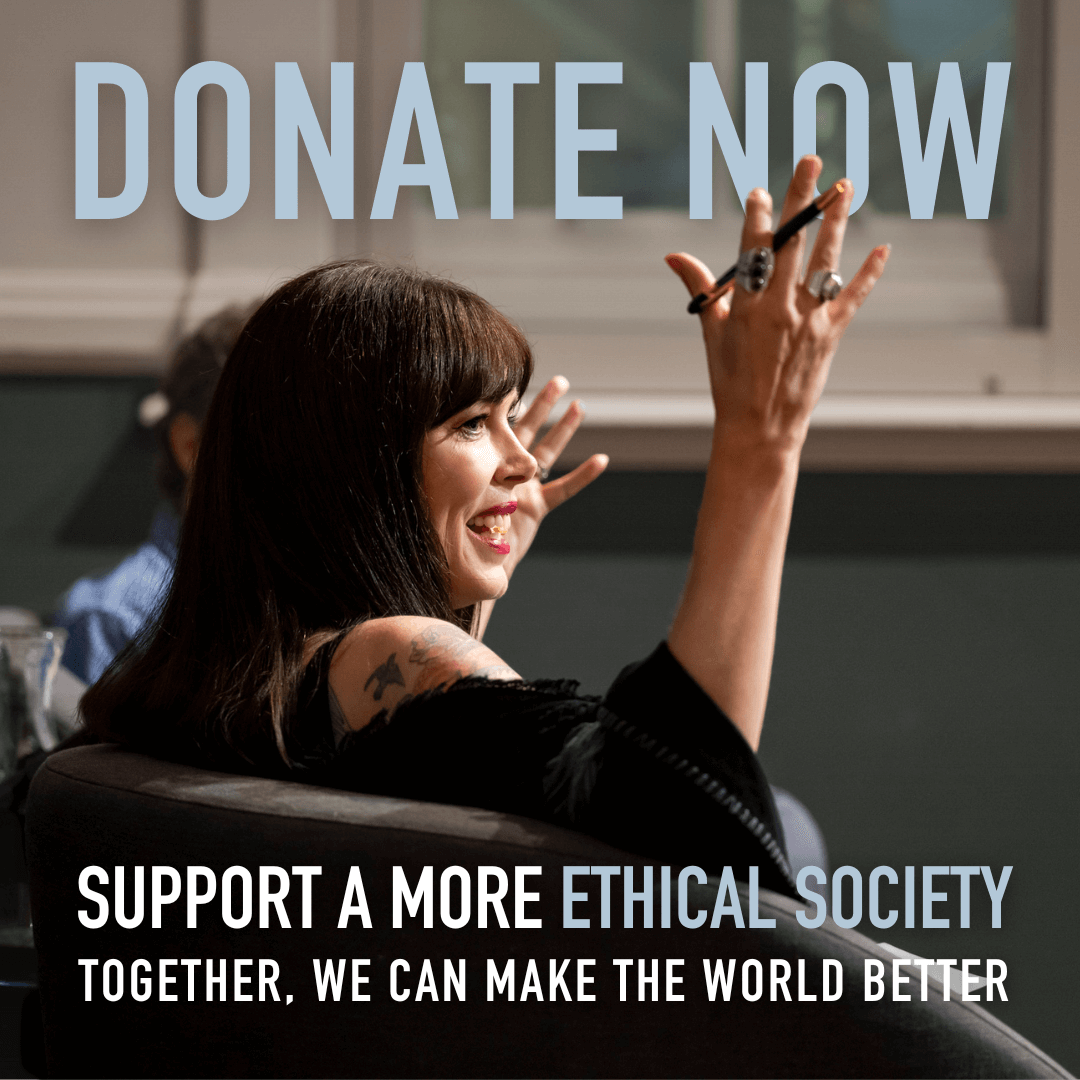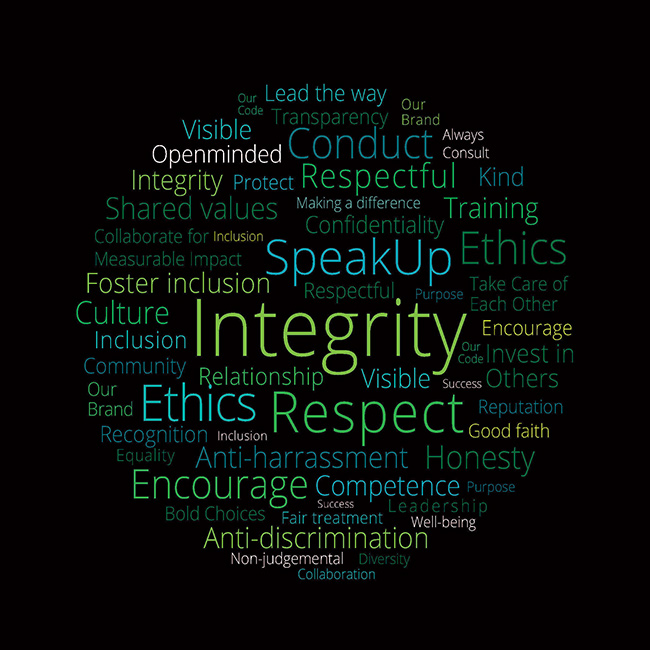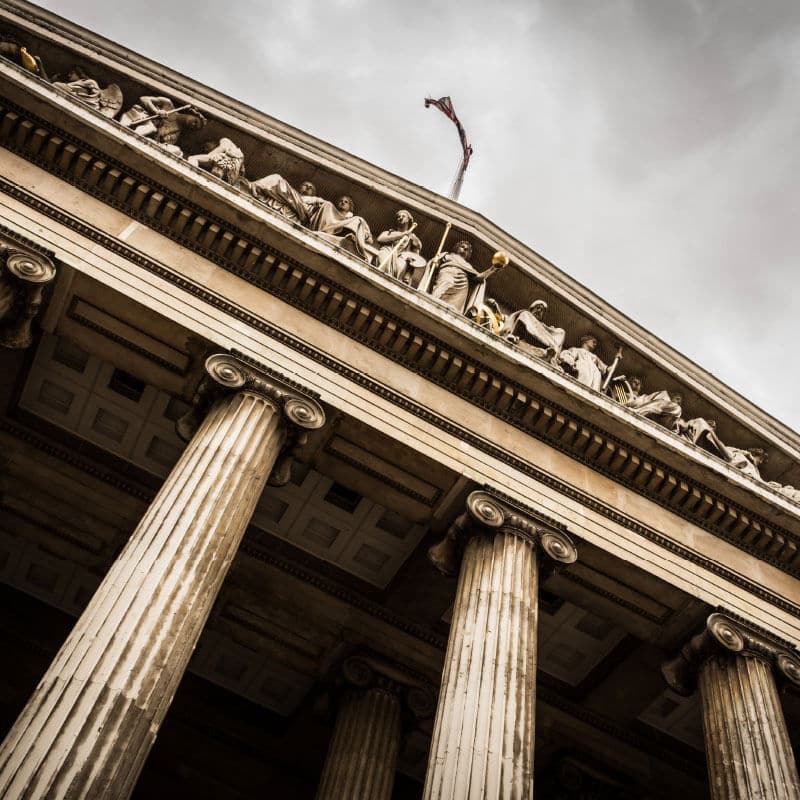‘Woke' companies: Do they really mean what they say?

‘Woke’ companies: Do they really mean what they say?
Opinion + AnalysisBusiness + Leadership
BY Fiona Smith The Ethics Alliance The Ethics Centre 2 MAR 2020
Virtue-signalling has a bad name. It is often derided as the boasting people do to feel superior – even when they have no intention of living up to the ideal.
It is like when they posted Facebook videos of pouring icy water over their own heads, hashtagged #IceBucketChallenge, but raised no money for research into Motor Neurone Disease.
Or when $US5.5 billion fast food company KFC appeared to use the challenge as a branding exercise, offering to donate up to $10,000 if its own buckets were used.
But here’s the thing: despite free riders and over-eager marketers, the 2014 viral campaign raised more than $A168 million in eight weeks and was able to fully fund a number of research projects.
If some of those getting in on the act gave nothing for the cause, does it matter? It is possible that, by flooding social media with the images, they helped build momentum for an extraordinarily successful campaign.
So, can virtue signalling also have a positive spin?
Conservative British journalist and former banker, James Bartholemew, claims to have invented the term “virtue signalling” in a column for The Spectator in 2015. He wrote: “It’s noticeable how often virtue signalling consists of saying you hate things.”
He says virtue signalling is often a person or brand attempting to aggrandise or promote themselves.
If you were frank, Bartholemew explains, what you would actually say is: “I care about the environment more than most people do” or “I care about the poor more than others”.
“But your vanity and self-aggrandisement would be obvious…”
Bartholemew says the term “virtue signalling” is pejorative in nature: “It is usually used as a judgement on what somebody else is saying. It is a judgement just like saying that somebody is boring or self-righteous. So it is not going to be used to praise somebody, but for taking a particular position.”
Virtue signalling: An attempt to show other people that you are a good person, for example by expressing opinions that will be acceptable to them, especially on social media.
Cambridge Dictionary definition.
It is social bonding
Philosopher and science writer, Dr Tim Dean, says virtue signalling has a social purpose – even when it is disingenuous. It expresses solidarity with a peer group, builds social capital and reinforces the individual’s own social identity.
“It sometimes becomes more important to believe and to express things because they are the beliefs that are held by my peer group, than it is to say things because we think they are true or false,” he says.
A secondary purpose according to Dr Dean is to distinguish that social group from all others, sometimes by saying something other groups will find disagreeable.
“I think a distant tertiary function is to express a genuinely held and rationally considered and justifiable belief.
“We are social first and rational second.”
Organisations use virtue signalling to broadcast what they stand for, differentiating themselves from the rest of the market by promoting themselves as good corporate citizens. Some of those organisations will be primarily driven by the marketing opportunity, others will be on a genuine mission to create a better planet.
A classic act of virtue signalling was the full-page advertisement in the New York Times, taken out last year by more than 30 B Corporations to pressure “big business” into putting the planet before profits. B Corps are certified businesses that balance profit and purpose, such as Ben and Jerry’s, Body Shop, Patagonia and the Guardian Media Group.
“We operate with a better model of corporate governance – which gives us, and could give you, a way to combat short-termism and the freedom to make decisions to balance profit and purpose,” the B Corps declared in their advertisement.
Their stated aim was to chivvy along the leaders in the Business Roundtable: 181 CEOs who had pledged to pledged to do away with the principle of shareholder primacy and lead their companies for the benefit of all stakeholders – customers, employees, suppliers, communities and shareholders.
Whose business is it?
There are some questions leaders should consider before they sign their organisations up to a campaign. In whose interests is a company acting if it lobbies for a social or political cause? How does it decide which issues are appropriate for its support?
The questions are of particular concern to conservatives, who have watched the business community speak up on issues such as gender targets, climate change and an Australian republic.
When the CEO of Qantas, Alan Joyce, pledged his company’s support in favour of the right of gay couples to marry, in 2017, it raised the ire of the conservative think-tank, The Centre For Independent Studies (CIS).
Last year, the centre published Corporate Virtue Signalling: How to Stop Big Business from Meddling in Politics – a book by its then-senior research fellow, Dr Jeremy Sammut.
At the launch of his book last year, Sammut noted recent developments that included Rio Tinto and BHP becoming the first companies to support Indigenous recognition in the Australian Constitution, a group of leading company directors forming a pressure group to push the Republican cause in Australia, while industry super funds were using their financial muscle to force companies to endorse “so-called socially responsible climate change” and industrial relations policies that aligned with union and Labor Party interests.
“If the proponents of CSR [corporate social responsibility] within Australian business, get their way, the kind of political involvement that we saw from companies during the same-sex marriage debate will be just a start,” Sammut said.
“It’s going to prove to be just the tip of the political meddling by companies in social issues that really have very little to do with shareholders’ interests, and the true business of business.”
Sammut pointed the finger at CSR professionals in human resources divisions and consultancy firms: “… they basically have an activist mindset and use the idea of CSR as a rubric, or a license, to play politics with shareholders money.”
Their ultimate ambition is to “subvert the traditional role of companies and make them into entities that campaign for what they call systemic change behind progressive social, economic, and environmental causes – all under the banner of CSR.”
Decide if it is branding or belief
It is not only the conservatives who view corporate virtue signalling with deep suspicion, those who may be considered “woke” (socially aware) can also view the practise with cynicism – especially when they have seen so many organisations pretend to be better than they are.
Dr Tim Dean notes there is a difference between corporate virtue signalling and marketing. While the former reinforces social bonds within a particular group, marketing appeals to people’s values in an attempt to elevate the company’s status, improve the brand and increase sales.
“I have some wariness around corporate statements of support for issues that are outside of their products and services, because I see there is a certain amount of disingenuousness about it.”
When a company promotes a stance on a social issue, it is often unclear whether it is supported by the CEO, the board, or the employees.
“ … if it’s separate from the work that they do, or does not relate directly to the structure, that’s where I think it’s a little more difficult to know exactly what the motivation is and whether we can trust it,” says Dean.
“Now, there are certainly times when we need to stand up for our moral beliefs and make public statements, even when we think they’re going to be strongly opposed. But I think I see that as more of an individual obligation rather than a business’s obligation.”
He says, when organisations are considering taking a moral stance, they should first ask themselves:
- Why are you doing it? Is it an honestly-held belief, or marketing?
- Whose views are you representing? What proportion of employees supports your stance?
- Is it any of your business’ business? Does it fit with the values of your organisation?
- Why do it as an organisation, rather than as individuals?
The Ethics Centre is a world leader in assessing cultural health and building the leadership capability to make good ethical decisions in complexity. To arrange a confidential conversation contact the team at consulting@ethics.org.au. Visit our consulting page to learn more.
Ethics in your inbox.
Get the latest inspiration, intelligence, events & more.
By signing up you agree to our privacy policy
You might be interested in…
Opinion + Analysis
Business + Leadership
Is debt learnt behaviour?
Opinion + Analysis
Business + Leadership, Science + Technology
Finance businesses need to start using AI. But it must be done ethically
Opinion + Analysis
Business + Leadership
Shadow values: What really lies beneath?
Reports
Business + Leadership
The Ethical Advantage
Join our newsletter
BY Fiona Smith
Fiona Smith is a freelance journalist who writes about people, workplaces and social equity. Follow her on Twitter @fionaatwork
BY The Ethics Alliance
The Ethics Alliance is a community of organisations sharing insights and learning together, to find a better way of doing business. The Alliance is an initiative of The Ethics Centre.
BY The Ethics Centre
The Ethics Centre is a not-for-profit organisation developing innovative programs, services and experiences, designed to bring ethics to the centre of professional and personal life.
Getting the job done is not nearly enough

Getting the job done is not nearly enough
Opinion + AnalysisBusiness + Leadership
BY Fiona Smith The Ethics Centre 2 MAR 2020
If a company wants to be trusted, it must be much more than merely competent. And, compared with community expectations around ethics, an ability to do the job is a relatively minor concern.
We now know ethical concerns are three times more important than being able to do the job to the expected standard, thanks to a recent global poll by the Edelman Trust Barometer.
Australia has been in a state of distrust for almost a decade, with an increasingly cynical and disappointed public, drip-fed on a regular diet of corporate and institutional scandals.
The recent bushfires made matters worse, with Australians feeling they were no longer in control, according to Edelman Australia CEO Michelle Hutton.
“The lack of empathy, authenticity and communications crushed trust across the country,” she told the Australian Financial Review.
The majority of the mass population do not trust their institutions to do what is right, according to the Barometer.
Executive director of The Ethics Centre, Dr Simon Longstaff, warns that important institutions in Australia are getting “perilously close” to losing their legitimacy – which creates anger, insecurity and fear.
None of those things allow a society to enjoy the kind of settled peace that it would aspire to, he said recently.
“Trust is an issue because most of our institutions have betrayed their purpose. I don’t think they set out to do it in a deliberate way. I think they forgot their purpose, whether it’s churches or banks or in politics,” he said on the ABC’s Q&A programme in February.
Longstaff defines trust as an ability to rely on somebody to do what they have said, even when no one is watching them.
The Edelman Trust Barometer divides company trust scores into four elements, and ability (or competence) accounted for 24% of the total. Ethical concerns make up the remainder: integrity 49%, purpose 12%, and dependability 15%.
The researchers find the reason for the general lack of trust in institutions is that none are regarded as both competent and ethical.
Among the institutions – business, government non-government organisations (NGOs) and the media – only the NGOs were seen as ethical (but not competent) and only business was found to be competent (but not ethical).
Part of the explanation for the poor regard for business ethics could be explained by the tendency of companies to give a higher priority to communicating their performance than their commitment to ethics and integrity, or their purpose and vision for the future, say the researchers.
“At the same time, stakeholder expectations have risen,” they say.
“Consumers expect the brands they buy to reflect their values and beliefs, employees want their jobs to give them a sense of purpose, and investors are increasingly focused on sustainability and other ethical commitments as a sign of a company’s long-term operational health and success.
“Business is already recognised for its ability to get things done. But to earn trust, companies must make sure that they are acting ethically, and doing what is right. Because for today’s stakeholders, competence is not enough.”
Dr Longstaff says regaining trust starts with owning up to mistakes.
“What we can expect of ourselves firstly sincerity, and then think before you act. Do that, and you can reasonably be assured that the trust that you hope for will be bestowed.”
How to rebuild trust:
Adopting a minimum threshold of fundamental values and principles can restore trust and minimise the risk of corporate failure.
- Respect people. Everyone has intrinsic value – regardless of their age, gender, culture, and sexual orientation. A person should never be used merely as a means to an end or as a commodity. This principle forbids wrongs, such as forced labour and supports the practice of stakeholder engagement.
- Do no harm. The goods and services should confer a net benefit to users without doing harm. Those who profit from engaging in harmful activity should disclose the nature of the risk.
- Be responsible. Benefits should be proportional to responsibility. One should look beyond artificial boundaries (such as the legal structures of corporations) to take into account the “natural” value-chain, such as how supply chains are viewed and concerning matters like corporate tax and its avoidance and evasion. This principle takes into account asymmetries in power and information to the detriment of weaker third parties.
- Be transparent and honest. These values are fundamental to the operation of free markets, in which stakeholders can make fully-informed decisions about the extent (of their involvement with the corporation. Corporations need to disclose details of the ethical frameworks that they employ when deciding whether or not a decision is “good” or “right”.
Source: Edelman Trust Barometer. An online survey in 28 markets of more than 34,000 people. Fieldwork was conducted between October 19 and November 18, 2019. A supplementary study was conducted in Australia in February 2020 to account for the bushfires. In Australia, 1,350 people were polled.
The Ethics Centre is a world leader in assessing cultural health and building the leadership capability to make good ethical decisions in complexity. To arrange a confidential conversation contact the team at consulting@ethics.org.au. Visit our consulting page to learn more.
Ethics in your inbox.
Get the latest inspiration, intelligence, events & more.
By signing up you agree to our privacy policy
You might be interested in…
Opinion + Analysis
Business + Leadership, Politics + Human Rights, Relationships
Tim Soutphommasane on free speech, nationalism and civil society
Opinion + Analysis
Business + Leadership
In the court of public opinion, consistency matters most
Opinion + Analysis
Business + Leadership
If it’s not illegal, should you stop it?
Opinion + Analysis
Business + Leadership, Science + Technology
MIT Media Lab: look at the money and morality behind the machine
BY Fiona Smith
Fiona Smith is a freelance journalist who writes about people, workplaces and social equity. Follow her on Twitter @fionaatwork
BY The Ethics Centre
The Ethics Centre is a not-for-profit organisation developing innovative programs, services and experiences, designed to bring ethics to the centre of professional and personal life.
How ‘ordinary’ people became heroes during the bushfires

How ‘ordinary’ people became heroes during the bushfires
Opinion + AnalysisBusiness + Leadership
BY Fiona Smith The Ethics Alliance The Ethics Centre 2 MAR 2020
As Australians watched their country burn over the summer school holidays, we were all given an unforgettable reminder about what leadership in a crisis looks like.
We now know it looks like the 150,000 volunteer firefighters across Australia who left their families to face down monster infernos, making split-second decisions to attempt a rescue or save themselves.
The face of leadership is covered by a protective mask on an 11-year-old Mallacoota boy, Finn Burns at the helm of an outboard motor, steering to safety his mother, brother and family dog. Behind them, the sky glows a dirty blood-red as if from another planet.
Leadership is embodied in all the so-called “ordinary” people who leapt into action with garden hoses, set up evacuation centres, jumped into their boats to ferry supplies to cut-off communities, launched fundraisers and scoured the smouldering landscape to rescue wildlife.
These leaders took the initiative when the authorities were unavailable or overwhelmed by the scope of the disaster.
Everyday Australians stepping up
NSW Transport Minister and Malua Bay resident, Andrew Constance, recounted on ABC’s Q&A program: “There were community relief centres that were set up immediately after that fire event, without the involvement of government. That was what was heartening. It was in Cobargo, Quaama, everywhere.
“I think the passion that people brought to that period, immediately after those nasty fire events, was something special. So, you can’t bottle it, you can’t pay for it, government can’t deliver it.”
Sitting in the ABC’s studio in Queanbeyan, just days after fighting fires on his own property and evacuating to the beach, the enormity of the experience was written on his exhausted face. He spoke about how he was still reeling and would get counselling to help through the aftermath.
Leadership consultant, Wayne Burns, lost a house at Lake Conjola to the fires and reflected on the difference between leadership and authority, penning an opinion piece in the Sydney Morning Herald.
“Leadership is an art exercised and practised deliberately. It is about influencing, encouraging, inspiring, and sometimes pushing and cajoling without being asked,” he writes.
“Leadership does not require authority, although it helps if a leader has the authority to direct and command resources.”
Filling a leadership vacuum
Speaking to The Ethics Centre of his experience at Lake Conjola, Burns says: “The people who had authority were overwhelmed. A lot was happening very quickly.”
He says that while those in government and emergency services were doing their best, they could not step beyond the authority of their official roles.
This created a “vacuum” which was filled by people who did not have authority, he says. These people took the initiative to do what needed to be done, commandeering water tanks and tools and making decisions about the property of other people.
“They stepped out of their everyday role, whether this was as a neighbour or as a retired person, and they created themselves a position of informal leadership.”
In Burns’ street, a retired engineer stayed behind in his home and became the unofficial spokesperson and decision-maker for around 24 neighbours. He negotiated with utilities companies, organised for dangerous trees to be cut down, helped Police track down residents, obtained access for insurance assessors, and arranged for spraying for asbestos.
“We all gave him informal power to make decisions on our behalf because we knew he had our interests at heart and we knew he was capable and we trusted him. So, it’s a transfer of trust from those with formal authority to those with informal authority,” says Burns, who studied leadership at the John F. Kennedy School of Government at Harvard University.
US management consultant, Gary Hamel, says people who wonder if they are a leader should imagine themselves with no power.
“If, given this starting point, you can mobilise others and accomplish amazing things, then you’re a leader. If you can’t, well then, you’re a bureaucrat,” writes Hamel in an article with Polly LaBarre.
Withdrawing consent to be led
Burns says Australians traditionally have a respect for authority and become indignant if officials let them down. When that happens, they may refuse to recognise the legitimacy of those leaders.
In January, angry Cobargo, NSW, locals turned on Prime Minister Scott Morrison, with some refusing to shake his hand. “In that situation, the Prime Minister has the authority, but he wasn’t afforded the informal leadership by those people, who had withdrawn from him their permission for him to lead them,” says Burns.
Policies, procedures and protocol can constrain people in authority. However, in a crisis, greater leadership can sometimes be shown by those who step beyond their authorised roles. Burns points to Minister Constance, who broke ranks politically to criticise the Federal Government’s response to the bushfire emergency.
Minister Constance told a television interviewer that the Prime Minister had probably “got the welcome he deserved” when he visited Cobargo without alerting Constance, who is the local member.
He also criticised some of the nation’s well-known charities for their slowness in delivering aid.
Burns says that Minister Constance demonstrated natural leadership in his actions facing into the crisis.
“He stepped up and he really led that community because he knew what was happening, he knew what they needed. He really did stick his neck out and rock the boat,” says Burns of Constance.
But it’s also okay to be a follower
Burns says the people most likely to step up into informal leadership have self-belief and some understanding of the legal or physical risks they are taking. “There is no personality type, there are no natural-born leaders – they don’t exist – people just decide to act.”
Burns says there is also nothing wrong with being a follower: “Not everyone wants, or can, lead.” The role those individuals can play is to put their trust into someone who has their confidence. “That person may not know the answer, but can bring people together to get the answer.”
If you are interested in discussing any of the topics raised in this article in more depth with The Ethics Centre’s consulting team, please make an enquiry via our website.
Ethics in your inbox.
Get the latest inspiration, intelligence, events & more.
By signing up you agree to our privacy policy
You might be interested in…
Opinion + Analysis
Business + Leadership, Society + Culture
The Ethics Institute: Helping Australia realise its full potential
Opinion + Analysis
Business + Leadership, Politics + Human Rights
We are on the cusp of a brilliant future, only if we choose to embrace it
Opinion + Analysis
Business + Leadership
Leading ethically in a crisis
Opinion + Analysis
Business + Leadership, Health + Wellbeing
Tips on how to find meaningful work
BY Fiona Smith
Fiona Smith is a freelance journalist who writes about people, workplaces and social equity. Follow her on Twitter @fionaatwork
BY The Ethics Alliance
The Ethics Alliance is a community of organisations sharing insights and learning together, to find a better way of doing business. The Alliance is an initiative of The Ethics Centre.
BY The Ethics Centre
The Ethics Centre is a not-for-profit organisation developing innovative programs, services and experiences, designed to bring ethics to the centre of professional and personal life.
How to build a successful culture

How to build a successful culture
Opinion + AnalysisBusiness + Leadership
BY The Ethics Centre 2 MAR 2020
They say that what gets measured, gets managed (or improved). But when it comes to measuring corporate culture, that’s an idea that needs unpacking.
The corporate sector has traditionally taken a quantitative approach to risk management and governance. Compliance, regulation, risk and legislative frameworks are applied, analysed, audited and reported-on to varying degrees of accuracy and certainty.
Unfortunately, these management mechanisms do not in themselves lead to effective governance as evidenced by a multitude of corporate scandals and collapses. Overconfidence in the science of risk management can lead to faulty corporate governance – and could well lead to disaster.
The art of risk management and governance lies in the capability of directors and executives to navigate and understand the highly complex and unpredictable set of human behaviours and interactions that make up a modern organisation.
The current scientific approach to risk management is insufficient when seeking to mitigate non-financial risks to business success – leaving companies vulnerable to catastrophic levels of exposure. There is now a shift in thinking and an appreciation that the intangible qualities of culture are critical to the issue of risk management and corporate governance.
Can you measure culture?
The subtle aspects of an organisation, such as values, motivations and political dynamics, are difficult to measure, influence and describe, let alone govern effectively. Performance management and processes, culture and engagement surveys, leadership competency assessments and organisational development initiatives are designed to create visibility of these aspects of organisations, but they often fall short by not accounting for the hidden, unspoken and un-self-aware aspects of human agents and the social systems in which they operate.
For over 20 years The Ethics Centre has been developing a unique approach to navigating these complexities – and, in the process, to accurately measure and understand culture.
Our Everest process assesses the level to which an organisation’s lived culture, and the actual systems and processes that drive the business, align with their intended ethical framework. Through in-depth exploration and analysis, gaps between the ideal and the actual culture of a business emerge, along with areas where formal systems and behaviours are misaligned to the stated values and principles.
Everest digs far deeper than a standard organisational review, identifying themes that relate to experiences over time and between groups of people, and reflecting them against the organisation’s formal policies and procedures. It enables companies to build a climate of trust for clients, shareholders and regulators; to unify employees around a common purpose and encourage values-aligned behaviour; to develop consistency between what you say you believe in and how you act; and to enable consistent decision making. Ultimately reducing the risk of ethical failure and poor decisions.
The Ethics Centre’s Everest process is a tried and tested methodology that produces invaluable insights and recommendations for change. In just the past five years, Everest has been deployed to assess the organisational culture of one of Australia’s largest banks, a major superannuation fund, a leading energy company, a major telco, a mining company and a wagering company – amongst many others.
Transforming organisations
Whilst most of our clients have chosen to keep their Everest reports confidential, two recent clients – The Australian Olympic Committee and Cricket Australia – elected to publicly release the reports into their organisations.
In both instances, these acts of “radical transparency” acted as a circuit-breaker following periods of widespread negative coverage. The release of these reports allowed the organisations to re-boot with renewed purpose and energy.
According to Matt Carroll, the widely-respected CEO of the AOC, “the review conducted by The Ethics Centre provided us with the platform to reset the organisation. We are committed to building a culture that is fit for purpose and aligned to our values and principles.”
Our report on Cricket Australia – following the infamous ball-tampering incident in 2018 – ran to 147 pages and contained 42 detailed recommendations. Our key finding was that a focus on winning had led to the erosion of the organisation’s culture and a neglect of some important values. Aspects of Cricket Australia’s player management had served to encourage negative behaviours.
It was clear, with the release of the report, that many things needed to change at Cricket Australia. And change they did. Cricket Australia committed to enacting 41 of the 42 recommendations made in the report, along with widespread renewal of their executive team and board.
“With culture, it’s something you’ve got to keep working at, keep your eye on, keep nurturing,” says CA’s chairman Earl Eddings. “It’s not: we’ve done the ethics report, so now we’re right.”
Most of the corporate collapses and scandals that have occurred lately were not the result of inadequate risk management, poorly crafted strategy or an absence of appropriate policies. Nor were they caused by incompetence or poorly trained staff.
In almost every case, it is becoming apparent that the causes lay in the psychology, ethics and beliefs of individuals and in an organisational culture that rewards short term value extraction over long term, sustainable value creation.
This misalignment between the espoused purpose, values and principles of an organisation and the real-time decisions being made each day can increase reputational and conduct risk leading to an erosion of trust, disengagement and poor customer outcomes.
Even companies with no burning platform benefit from the rigorous corporate health-check that Everest provides. To quote Ian Silk, CEO of another Everest client Australian Super:
“In my darkest moments I just wondered if we had all drunk the Kool-Aid, and whether the staff surveys reflected the facts. So I thought a really good way to test this would be to get The Ethics Centre to come in and do an entirely independent, entirely objective test of the culture and the ethics in the organisation.”
If you are interested in discussing any of the topics raised in this article in more depth with The Ethics Centre’s consulting team, please make an enquiry via our website.
Ethics in your inbox.
Get the latest inspiration, intelligence, events & more.
By signing up you agree to our privacy policy
You might be interested in…
Opinion + Analysis
Business + Leadership
Susan Lloyd-Hurwitz on diversity and urban sustainability
Opinion + Analysis
Business + Leadership, Health + Wellbeing
Why ethical leadership needs to be practiced before a crisis
Opinion + Analysis
Business + Leadership, Relationships
The transformative power of praise
Opinion + Analysis
Business + Leadership
Has passivity contributed to the rise of corrupt lawyers?
BY The Ethics Centre
The Ethics Centre is a not-for-profit organisation developing innovative programs, services and experiences, designed to bring ethics to the centre of professional and personal life.
Ready or not – the future is coming

Ready or not – the future is coming
Opinion + AnalysisBusiness + Leadership
BY John Neil The Ethics Centre 2 MAR 2020
We are living in an exceptional era of human history. In a blink of the historical time scale, our species now have the skills to explore the universe, map and modify human genes and develop forms of intelligence that may far surpass their creators.
In fact, given the speed, unpredictability and sheer scale of what was previously unthinkable change, it’s actually better to talk of the future in the plural rather than the singular: the ‘futures’ are coming.
With the convergence of genetic engineering, AI and neurotechnology, entirely unique challenges arise that could test our assumptions about human identity and what connects us together as a species. What does the human experience mean in an era of augmentation, implantation, enhancement and editing of the very building blocks of our being in the future? What happens when we not only hack the human body, but the human mind?
The possible futures that are coming will arrive with such speed that those not ready for them will find themselves struggling to know how to navigate and respond to a world unlike the one we currently know. Those that invest in exploring what the future holds will be well placed to proactively shape their current and future state so they can traverse the complexity, weather the challenges, and maximise the opportunities the future presents.
The Ethics Centre’s Future State Framework is a tailored, future-focused platform for change management, cultural alignment and staff engagement. It draws on futuring methodologies, including trend mapping and future scenario casting, alongside a number of design thinking and innovation methodologies. What sets Future State apart is that it incorporates ethics as the bedrock for strategic and organisational assessment and design. Ethics underpins every aspect of an organisation. An organisation’s purpose, values and principles set the foundation for its culture, gives guidance to leadership, and sets the compass needed to execute strategy.
The future world we inhabit will be built on the choices we make in the present. Yet due to the sheer complexity of the multitudes of decisions we make every day, it’s a future that is both unpredictable and emergent. The laws, processes, methods and current ways of thinking in the present may not serve us well in the future, nor contribute best to the future that we want to create. By envisioning the challenges of the future through an ethics-centred design process, the Future State Framework ensures that organisations and their culture are future-proof.
The Future State Framework has supported numerous organisations in reimagining their purpose and their unique economic and social role in a world where profit is rapidly and radically being redefined. Shareholder demand is moving beyond financial return, and social expectations toward the role of corporations are shifting dramatically into the future.
The methodology helps organisations chart a course through this transformation by mapping and targeting their desired future state and developing pathways for realising it. It been designed to support and guide both organisations facing an imminent burning platform and those wanting to be future forward and leading – giving them the insight to act with purpose – fit for the many possibilities the future might hold.
If you are interested in discussing any of the topics raised in this article in more depth with The Ethics Centre’s consulting team, please make an enquiry via our website.
Ethics in your inbox.
Get the latest inspiration, intelligence, events & more.
By signing up you agree to our privacy policy
You might be interested in…
Opinion + Analysis
Business + Leadership
Pavan Sukhdev on markets of the future
Opinion + Analysis
Business + Leadership
How can Financial Advisers rebuild trust?
Opinion + Analysis
Business + Leadership
Activist CEO’s. Is it any of your business?
Opinion + Analysis
Business + Leadership

























